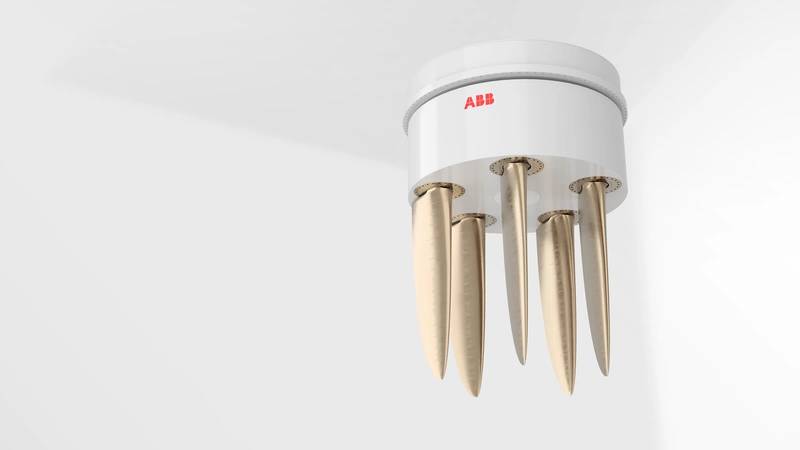The Problem with Reducing Underwater Radiated Noise
If the global commercial fleet reduced its speed by 10%, it would reduce underwater radiated noise by 40%, but nothing’s ever that simple.
The main thing holding the shipping industry back from reducing its underwater radiated noise (URN) is not a lack of appropriate technology. It’s argued that many of the technologies being implemented today to reduce fuel consumption also reduce noise. So, the noise reductions could essentially come at no net cost to the shipowner, but there’s a lack of regulation and a lack of targeted incentives, so it’s not being prioritized.
A new version of the IMO guidelines on URN were approved in July 2023 as circular MEPC.1/Cir.906 with the aim of changing the situation. They apply, voluntarily, to new and existing ships, and key among the suggestions is the development of a Noise Management Plan for a ship. The guidelines include lists of suitable techniques for measurement of URN, explains Chris Waddington, Technical Director at the International Chamber of Shipping (ICS).
Shipowners can define their own targets or adopt the goals of quiet ship notations offered by class. "Many of the fuel efficiency measures adopted by shipowners to meet the IMO GHG regulatory requirements are also known to reduce URN," says Waddington. "If considered at an early stage, and by careful consideration of the adopted GHG reduction measures, it is likely that significant URN reductions can also be achieved with no additional cost."
 Chris Waddington: If considered at an early stage, and by careful consideration of the adopted GHG reduction measures, it is likely that significant URN reductions can also be achieved with no additional cost. Image courtesy ICS
Chris Waddington: If considered at an early stage, and by careful consideration of the adopted GHG reduction measures, it is likely that significant URN reductions can also be achieved with no additional cost. Image courtesy ICS
Propellers are the main source of URN, and he cites some promising remedies: air lubrication could reduce fuel consumption by 7% and URN by over 10dB; propeller cleaning could reduce fuel consumption by 3-4% and URN by up to 5Db and wind-assisted propulsion could reduce fuel consumption by 10-30% and URN by over 10dB (all figures are approximate).
Gavin Allwright, Secretary General, International Windship Association (IWSA), says wind-assist will likely take load off the propeller when operating at moderate levels and quite significantly with higher levels, and this can also be deployed in combination with a slowing of the vessel which also significantly lowers URN. “Having wind onboard also enables range to be extended for the vessels without increased fuel consumption, thus creating the potential to avoid more sensitive regions/channels, or there is an option to build these sensitive areas into the routing for wind software that may enable that portion of the voyage to be undertaken using wind power alone or significantly reduced propellor loads.”
Shipping sustainability expert Dr Seyedvahid Vakili of the University of Southampton highlights the significant potential to reduce URN from commercial vessels by complying with IMO GHG emissions regulations. He estimates that a 10% reduction in speed could result in a 40% reduction in sound energy generated by global shipping because cavitation noise levels is speed-dependent. He notes, though, that this projection only relates to vessels with fixed pitch propellers (FPP).
Reducing speed with controllable pitch propellers (CPP) can tend to increase propeller noise, but as one OEM explains, that’s an over-simplified generalization mainly valid for constant rpm operation. FPPs can usually be built with more propeller blades than CPPs, because the mechanism to change the pitch of the blades takes up space in the propeller hub. Hence the lack of space might be a limiting factor for the blade-count of CPP-systems in some cases.
More blades can reduce noise emissions, if they are built in a way in which they can distribute the pressure field more evenly, but this doesn’t automatically mean, that every five-blade propeller is better than a four-blade propeller. It all strongly depends on the thruster and what it is optimized for, which usually depends on the operational profile of the vessel it is used in.
Since a CPP can adapt to different operating conditions by changing the pitch of the blades, it can also reduce URN by adjusting the pitch. In some cases, this capability might outweigh all possible advantages of a FPP.
With the introduction earlier this year of ABB’s DynaFin propulsor, there’s another option available. Janne Pohjalainen, ABB’s Global Product Line Manager, ABB Dynafin, says the system’s individual blade control allows flexibility in blade trajectories to maximize propulsion efficiency and responsiveness in all operational situations. It also allows for the use of optimized trajectories to reduce propeller noise.
“Unlike screw propellers, ABB Dynafin does not generate vertical pressure pulses against the vessel's hull, which results in lower levels of propeller-induced noise and vibrations, and thus also in improved passenger comfort. Furthermore, gearless design minimizes mechanical noise and vibrations in the ship hull,” says Pohjalainen.
 There’s a process for ensuring the right decisions are made to control URN alongside other related non-acoustic factors, says Jesse Spence. Photo courtesy NCE
There’s a process for ensuring the right decisions are made to control URN alongside other related non-acoustic factors, says Jesse Spence. Photo courtesy NCE
Jesse Spence, President of Noise Control Engineering (NCE), says that today's commercial vessel specifications don’t set URN targets. This is an opportunity lost. “It is typical to develop designs, particularly for propellers, where you’re squeezing out every last ounce of efficiency, with inadvertent negative impacts to URN. This is simply because the designers have not been instructed to include UWN in the design spiral.”There are many technologies available to reduce URN, some of which may also reduce fuel consumption. However, Spence says it’s not just a case of picking out a technology from a shopping list. Vessel designers are in the best position to identify the design features that will work for a given vessel. Some noise control technologies are only effective if the vessel suffers from a particular symptom. For example, applying a technology that would reduce propeller hub cavitation to a vessel that does not have hub cavitation would not improve URN.
Moreover, there are fundamental design decisions that will have a greater impact noise and efficiency, such as the shape of the hull form. This will determine the flow into the propeller, and ultimately determines what an optimized propeller design will look like. These are factors that need to be decided by the specialists that are working on the vessel design.
There’s a process for ensuring the right decisions are made to control URN alongside other related non-acoustic factors: include an underwater noise limit in the vessel specification. This simple act will enable engineers, naval architects and acoustic specialists to be involved in the design process, working together to develop an effective design. He cautions: “Without having some sort of line in the sand for engineers to design towards, you’re going to make design decisions that are likely to adversely impact URN.”


























